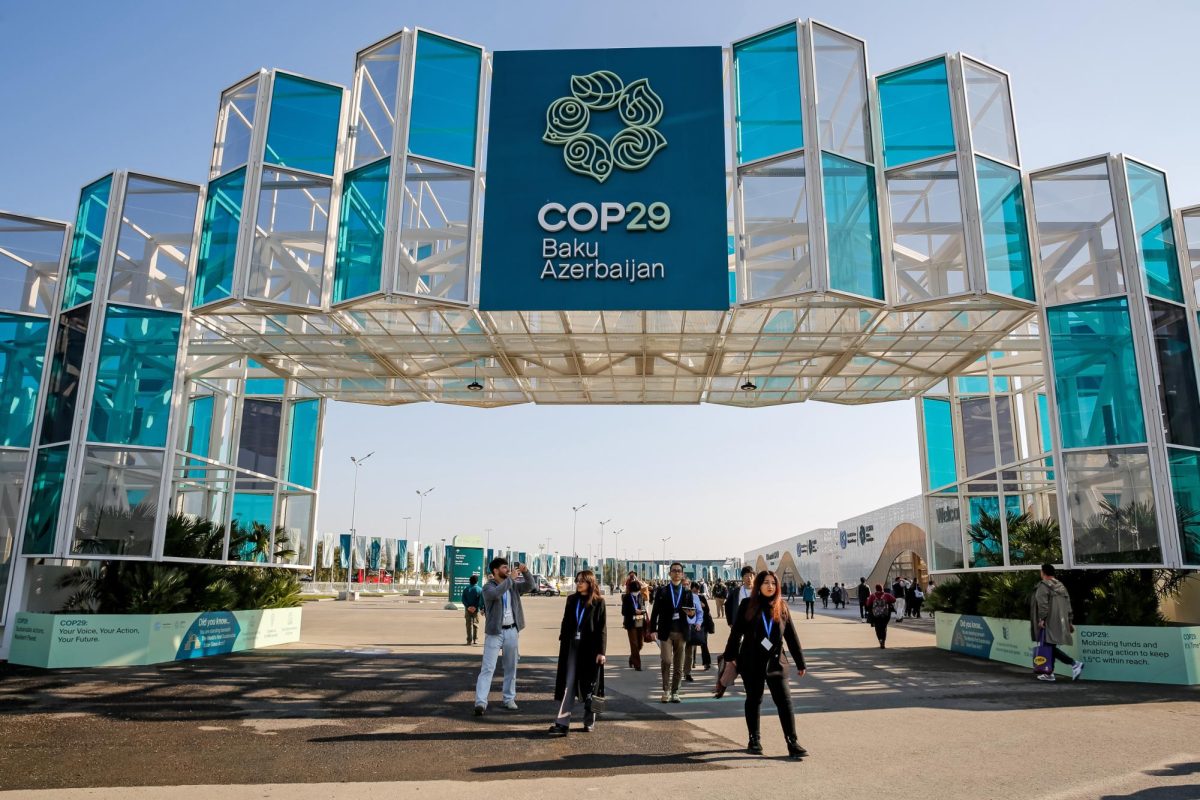Various students, faculty, and staff from UC San Diego’s Scripps Institution of Oceanography and School of Global Policy and Strategy are currently attending COP29, the 29th United Nations Climate Change Conference, in Baku, Azerbaijan.
COP29 runs from Nov. 11 to Nov. 24 and aims to bring together world leaders, politicians, experts, and participants to address the global climate crisis. The conference focuses on advancing international climate policies, strengthening commitments to emission reduction, and fostering collaboration among the 197 countries and the European Union, attendees of COP29 this year.
“I feel very lucky to have the opportunity to attend such an incredible conference, and I hope that, in an ever-changing political landscape, policymakers can find common ground and protect those most vulnerable to the impacts of a changing climate,” said Jaden Hill, a student at SIO pursuing a Master of Advanced Studies in climate science and policy.
“My time at Scripps has given me the opportunity to learn from people who have worked at the intersection of climate science and policy; they’ve taught me how to effectively communicate science with the goal of generating meaningful policy,” Hill said.
A focal point of COP29 is a collaborative project led by the Woods Hole Oceanographic Institution and UCSD’s SIO titled “The Ocean Pavilion.” This project showcases the ocean’s role in climate systems and explores scientific approaches to addressing climate change.
The Ocean Pavilion highlights the ocean’s importance to everyone and emphasizes the need for science to lead in developing long-term solutions to climate change. Mitchell Chandler, a Ph.D. candidate at SIO who studies large scale ocean currents emphasized the power of long-term ocean observations in his research. “In my research, I use ocean observations that have been collected over decades, and it is very clear to see the impacts — such as ocean warming and sea level rise — that anthropogenically driven climate change is having on the global ocean,” he said.
SIO plans to implement their policy that incorporates the “equity-weighted” social cost of carbon into the travel expenses of its representatives.
The social cost of carbon is an estimate, expressed in U.S. dollars, that calculates the economic damages linked to each additional ton of carbon dioxide emissions. It integrates societal costs into UC institution investment strategies that are designed to lower campus energy expenses and reduce greenhouse gas emissions.
The guidelines estimate the social cost of carbon at $265 per metric ton. SIO encourages travelers attending COP to contribute funds equivalent to the estimated SCC of their travel emissions. Donations will go to nongovernmental organizations working to address the effects of climate change or to reduce greenhouse gas emissions.
Benjamin Taylor, a Ph.D. candidate at SIO, explained the changes he hopes to see by the end of COP29. “Key goals are agreements for mechanisms that will move money from wealthy polluters to Global South communities that want to develop sustainably, preserve healthy ecosystems, and adapt to climate change,” he said.
This initiative includes efforts to raise awareness of the environmental costs of travel emissions and to expose the shortcomings of many carbon offset programs that fail to deliver on their claims.
Conferences like COP29 highlight the importance of finding solutions to the global climate crisis. When asked what UC San Diego students can do about climate change, SIO doctoral candidates attending COP29 said students should engage in climate activism, no matter how small the actions might be.
“No one can do everything, but everyone can do something,” said Kerstin Bergentz, a Ph.D. candidate at SIO. “It may sound cliché, but I really believe that’s true.”
“It’s understandable to feel overwhelmed by the scale of change needed, but we urgently need smart, creative, and passionate young minds engaged in climate activism,” said Ella Kim, another doctoral candidate at SIO. “Dr. Ayana Elizabeth Johnson, a Scripps alum and climate activist, has a fantastic Venn diagram that I love sharing with students. It illustrates how to find your role in climate action.”
“Action doesn’t have to be perfect — just start somewhere. Activism can take many forms,” Bergentz explained. “For some, activism looks like a protest, and for others, it’s inspiring your friends and family to eat more vegetarian food — and that’s good!”








